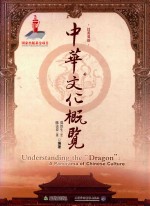图书介绍
中华文化概览 中英版PDF|Epub|txt|kindle电子书版本网盘下载

- 郑铁生(中),陈发春(英)编著 著
- 出版社: 天津:天津教育出版社
- ISBN:9787530961629
- 出版时间:2010
- 标注页数:319页
- 文件大小:81MB
- 文件页数:339页
- 主题词:文化史-中国-汉、英
PDF下载
下载说明
中华文化概览 中英版PDF格式电子书版下载
下载的文件为RAR压缩包。需要使用解压软件进行解压得到PDF格式图书。建议使用BT下载工具Free Download Manager进行下载,简称FDM(免费,没有广告,支持多平台)。本站资源全部打包为BT种子。所以需要使用专业的BT下载软件进行下载。如BitComet qBittorrent uTorrent等BT下载工具。迅雷目前由于本站不是热门资源。不推荐使用!后期资源热门了。安装了迅雷也可以迅雷进行下载!
(文件页数 要大于 标注页数,上中下等多册电子书除外)
注意:本站所有压缩包均有解压码: 点击下载压缩包解压工具
图书目录
第一章 龙的故乡1
一、龙的文化1
二、传说中的祖先——黄帝2
三、中国最早的文字——甲骨文3
四、《易经》4
五、司马迁和《史记》5
第二章 孔子和儒家7
一、孔子与《论语》7
二、孔子与儒家学派8
三、曲阜与“三孔”9
第三章 老子与道教11
一、老子11
二、道教12
三、道教的养生术14
四、道教的洞天福地15
第四章 佛教在中国17
一、玄奘取经17
二、四大石窟18
三、四大佛教名山22
四、藏传佛教和喇嘛寺庙25
第五章 古代教育27
一、官学与私学27
二、书院文化29
三、科举制32
四、《百家姓》《千字文》《三字经》33
第六章 古代科技35
一、四大发明35
二、祖冲之和圆周率38
三、郭守敬修订历法38
四、李冰和都江堰39
五、世界上最长、最古老的大运河41
第七章 古代建筑42
一、园林建筑42
二、宫殿建筑45
三、陵墓建筑46
四、万里长城48
五、古都的建筑49
第八章 古代工艺53
一、青铜器53
二、兵马俑54
三、唐三彩56
四、瓷都景德镇和五大古窑57
五、四大名砚59
六、中国的雕刻60
七、玉器文化64
八、四大名绣65
九、“泥人张”与惠山泥人67
十、扎染68
第九章 古代文学70
一、《诗经》和“楚辞”70
二、唐诗71
三、宋词74
四、明清小说76
第十章 国画、书法、篆刻78
一、中国画78
二、人物画79
三、山水画84
四、花鸟画85
五、中国书法87
六、中国篆刻89
第十一章 中国民间艺术91
一、乐器91
二、民歌92
三、民族舞94
四、秧歌96
五、舞狮97
第十二章 中国戏曲99
一、京剧艺术99
二、京剧四大名旦101
三、京剧脸谱艺术103
四、京剧服饰104
五、秦腔、皮影105
第十三章 曲艺、杂技108
一、相声108
二、快板和快板书109
三、鼓曲110
四、评书112
五、吴桥杂技113
第十四章 中医文化114
一、阴阳五行与医学114
二、《黄帝内经》115
三、神医华佗116
四、张仲景与《伤寒论》116
五、李时珍与《本草纲目》117
六、望闻问切118
七、针灸铜人119
第十五章 货币文化121
一、贝币、布币、刀币、方孔铜钱、铜圆121
二、金币、银币122
三、纸币123
四、纪念币124
第十六章 饮食文化126
一、宫廷御膳126
二、四大菜系127
三、面点小吃130
四、传统筵席132
五、酒文化132
六、品茗之道134
第十七章 中华武术135
一、拳术135
二、武术与养生137
三、武术与兵法138
四、十八般兵器140
五、十八般武艺141
第十八章 古代中外文化交流143
一、东渡日本的鉴真和尚143
二、丝绸之路145
三、马可·波罗到中国146
四、郑和下西洋147
编后语149
Understanding the “Dragon”: A Panorama of Chinese Culture151
Preface153
Foreword155
Chapter One The Origin of the Dragon157
Dragon Culture157
Emperor Huangdi—the Legendary Chinese Ancestor158
The Oracle Bone Inscription—the Earliest Chinese Writing Script160
I Ching—The Book of Changes161
Sima Qian and Shiji162
Chapter Two Confucius and Confucianism164
Confucius and The Analects of Confucius164
Confucius and Confucianism165
Qufu and Confucian Mansion, Temple and Cemetery166
Chapter Three Laozi and Taoism169
Laozi169
Taoism170
Taoism Regimen173
Cave Heaven and Blessed Region174
Chapter Four Buddhism in China176
Xuan Zang’s Pilgrim to India176
Four Reputed Grottoes177
Four Sacred Mountains of Buddhism182
Tibetan Buddhism and Lama Temples185
Chapter Five Ancient Education188
Public and Private Schools188
The Classical Academy190
The Imperial Civil Examination System191
Hundred Family Surnames, Thousand-character Classic and Three-character Scripture193
Chapter Six Ancient Technologies195
The Four Great Inventions195
Zu Chongzhi and His π199
Guo Shoujing and His Improved Calendar200
Li Bing and His Dujiang Weir201
The Grand Canal—the Longest and the Oldest in the World203
Chapter Seven Ancient Architecture205
Garden Architecture205
Palatial Architecture—The Imperial Palace207
Tombs and Mausoleums209
The Great Wall211
Architecture of Ancient Capitals212
Chapter Eight Ancient Arts and Crafts218
Bronze Artifacts218
Terracotta Army219
Tang Sancai Glazed Pottery221
Jingdezhen—the China Capital and Home of the Four Ancient Kilns222
Four Famous Varieties of Ink Stones223
The Art of Chinese Sculpture and Carvings224
Jade Culture227
Four Brand-name Embroidery Styles229
Clay Figurine Zhang and Clay Figurine Huishan230
Bandhnu232
Chapter Nine Ancient Literature233
The Book of Songs and “Songs of Chu”233
Tang Poetry234
Song Poetry236
Novels of the Ming and Qing Dynasties238
Chapter Ten Chinese Painting, Calligraphy and Seal Cutting240
Chinese Painting240
Figure Painting242
Landscape Painting245
Bird-and-flower Painting247
Chinese Calligraphy248
Chinese Seal Cutting250
Chapter Eleven Chinese Folk Art252
Chinese Musical Instrument252
Folk Songs254
Folk Dance255
Yangko258
Lion Dance259
Chapter Twelve Chinese Opera261
The Art of Beijing Opera261
Four Famous Dans of Beijing Opera262
The Art of Facial Makeup in Beijing Opera265
Beijing Opera Costumes266
Shaanxi Opera and the Shadow Play267
Chapter Thirteen Quyi and Acrobatics270
Xiangsheng270
Kuaiban and Kuaibanshu271
Guqu272
Pingshu274
Wuqiao Acrobatics275
Chapter Fourteen Chinese Medicine277
Yin-yang and Wu-hsing in Chinese Medical Theory277
Huangdi Neijing278
Hua Tuo—the Divine Doctor279
Zhang Zhongjing and Shanghanlun280
Li Shizhen and Bencaogangmu280
The Four Diagnostic Methods281
The Bronze Acupuncture Figure282
Chapter Fifteen The Culture of Money284
Shell Money, Spade Money, Knife Money, Square-holed Copper Money and Copper Coins284
Gold and Silver Coins286
Paper Money287
Commemorative Coin288
Chapter Sixteen Cuisine290
Gong Ting Yu Shan290
Four Major Chinese Cuisines292
Flour-made Food and Snacks295
Traditional Yan Xi297
Chinese Wine Culture298
Chinese Tea Culture299
Chapter Seventeen Wushu—Chinese Martial Arts301
Chinese Boxing301
Wushu for Health Preservation302
Wushu and the Art of War304
The 18 Types of Weapons305
The 18 Types of Feat306
Chapter Eighteen Cultural Exchanges with the World307
Jianzhen and His Voyages to Japan307
The Silk Road309
Marco Polo and His Travels to China311
Zheng He and His Voyages to the Occident312
Afterword315
附录318
中国历代纪元表A Brief Chronology of Chinese History318